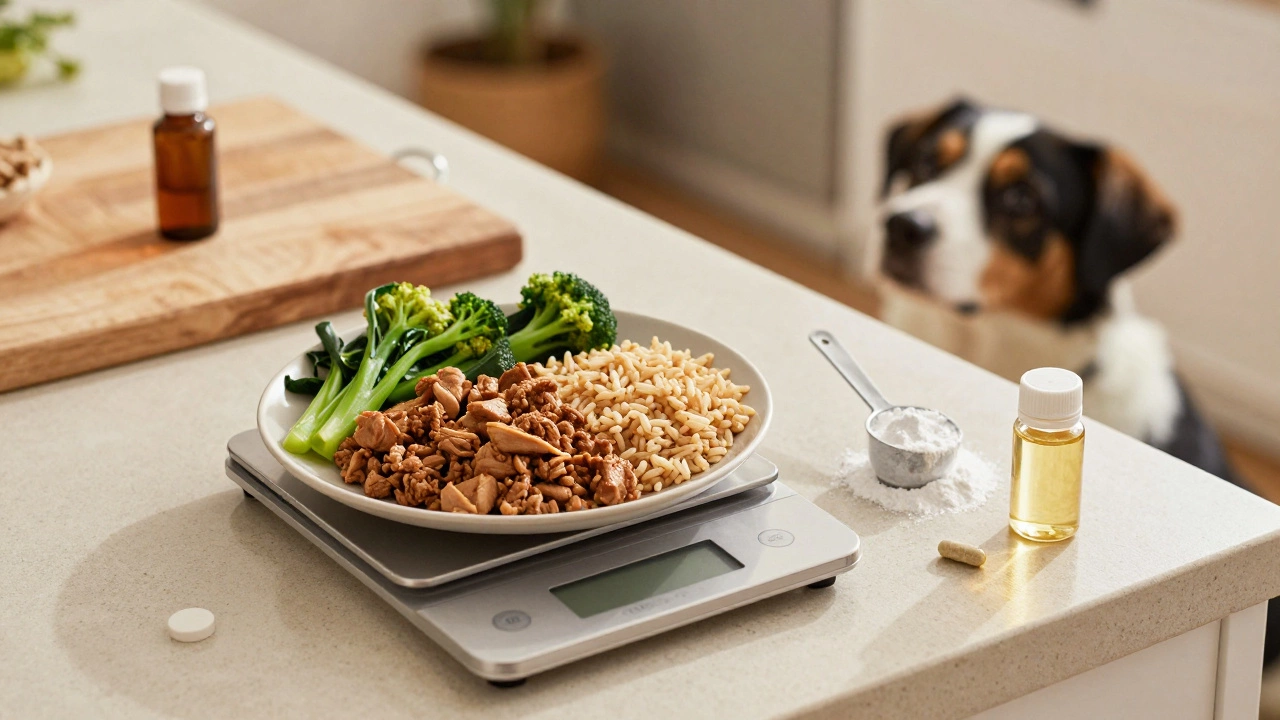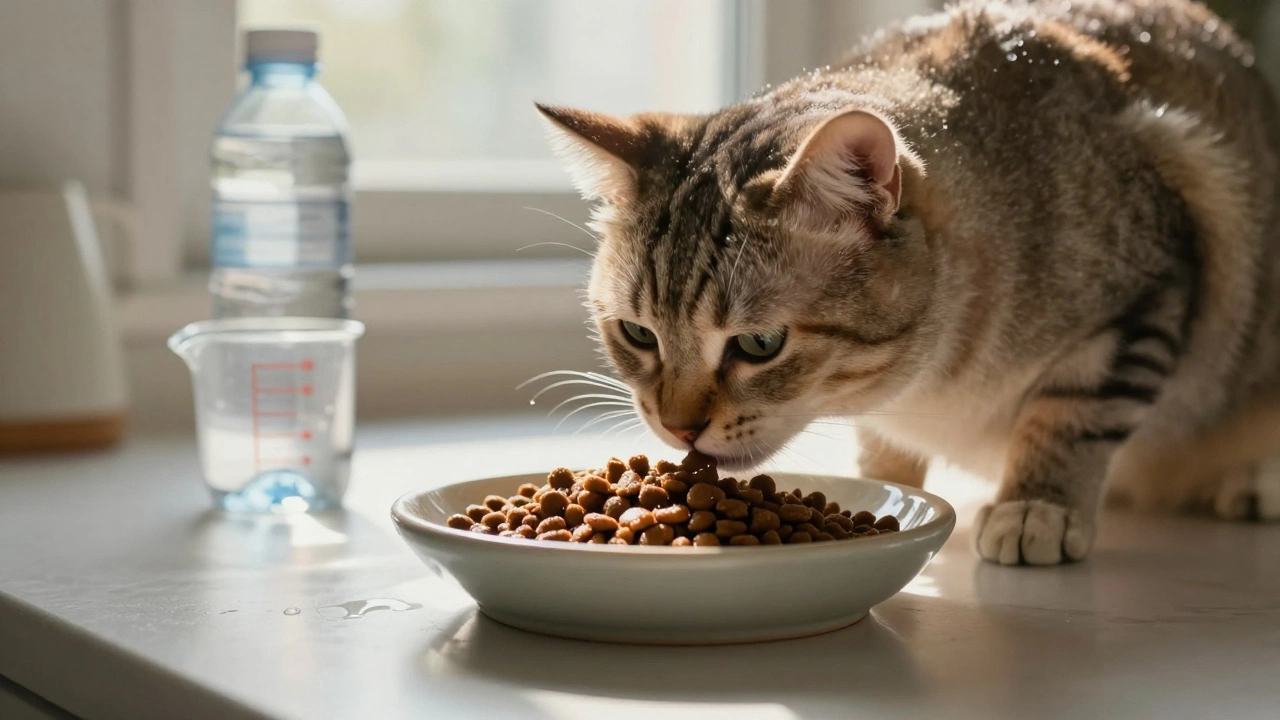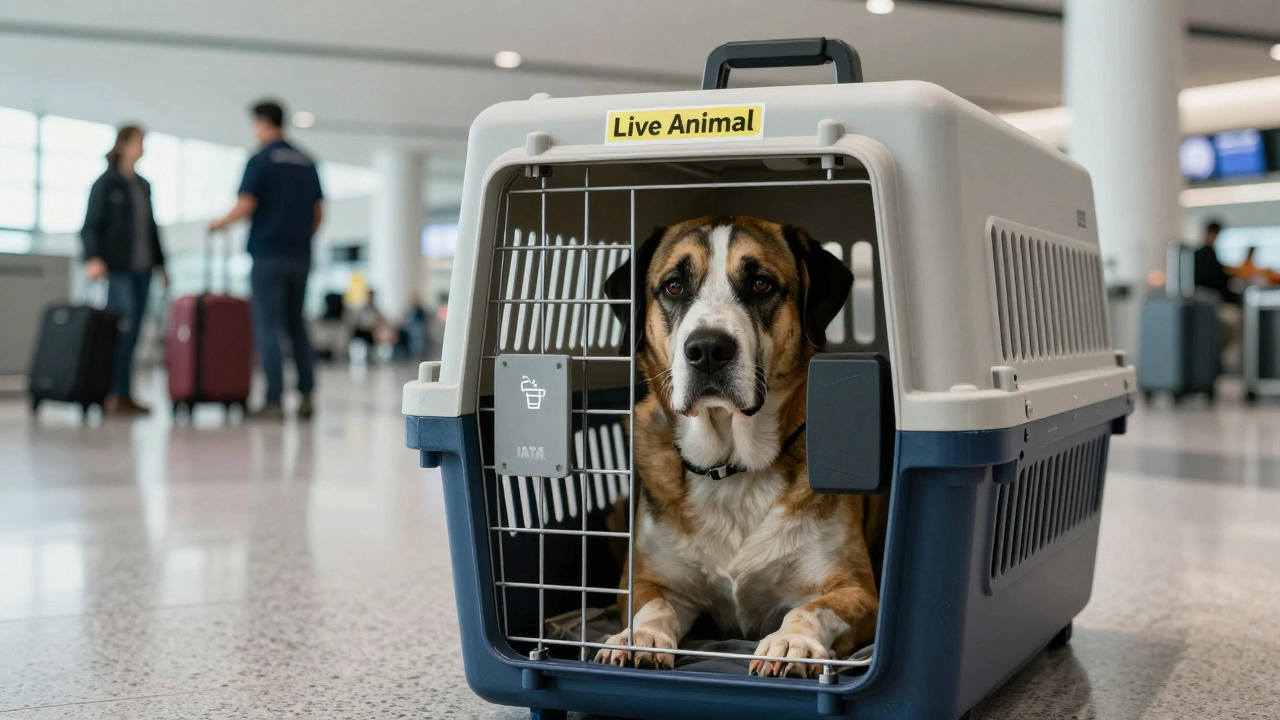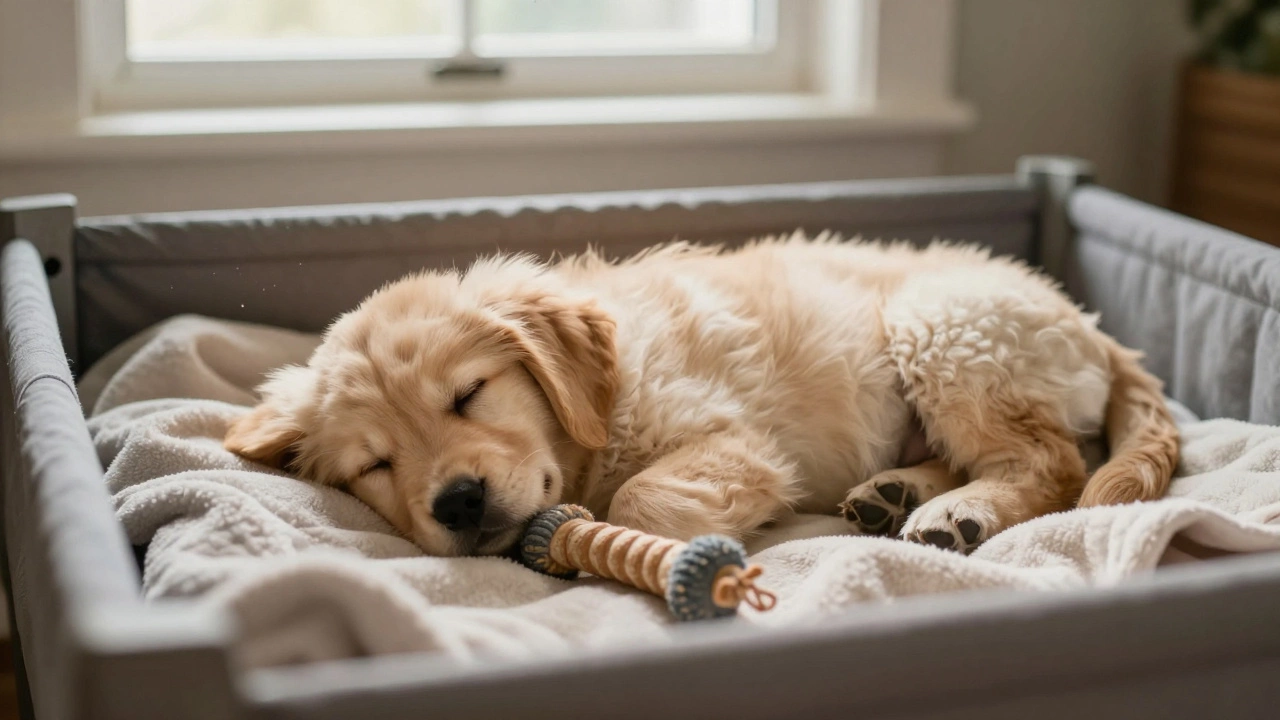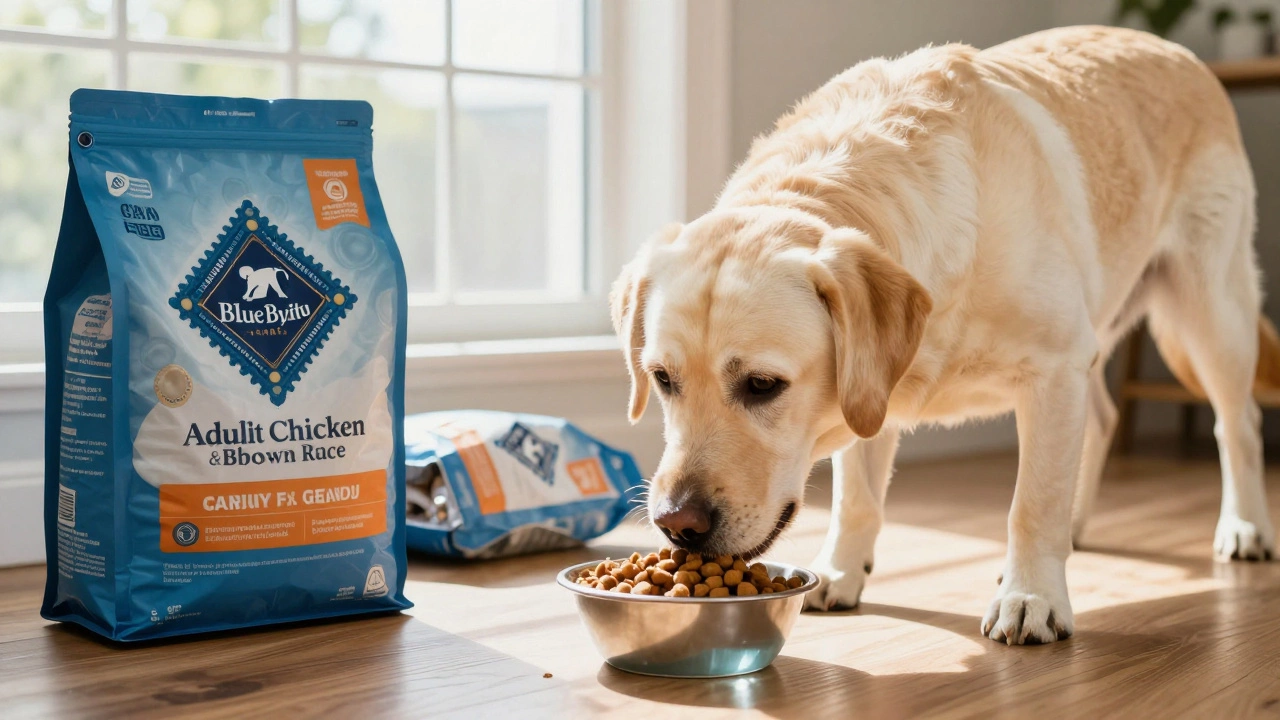Dog Grooming Frequency Calculator
Find Your Dog's Grooming Schedule
Answer a few questions to get personalized grooming recommendations for your dog.
Your Recommended Grooming Schedule
Ever wondered if brushing your pup once a month is enough or if that shaggy terrier needs a weekly spa session? The truth is, there’s no one‑size‑fits‑all answer-grooming needs shift with breed, coat, lifestyle, and even the weather.
Quick takeaways
- Grooming frequency hinges on coat type, health, and activity level.
- Short‑haired dogs: brush 1‑2 times weekly, full grooming every 6‑8 weeks.
- Long‑haired and double‑coated breeds: brush daily, full grooming every 4‑6 weeks.
- Older or skin‑sensitive dogs may need gentler, more frequent sessions.
- Watch for matting, odor, skin irritation, or nail overgrowth as signs you’re due for a session.
When talking about Dog grooming is the process of cleaning, trimming, and maintaining a dog's coat, skin, and nails to keep them healthy and comfortable, we’re really covering three core tasks: coat care, skin health, and nail maintenance.
What drives a healthy grooming schedule?
Three big drivers shape a sensible dog grooming frequency plan.
- Coat characteristics - the length, density, and type of hair.
- Health and age - skin conditions, allergies, and joint issues.
- Lifestyle and climate - outdoor activity, shedding cycles, and seasonal changes.
Coat type is the single most predictive factor. Below are the four most common categories, each with its own demands.
Short‑haired breeds have hair that lies close to the skin and sheds minimally (e.g., Beagle, Doberman). They usually need a quick brush a couple of times a week to remove loose hair and distribute natural oils.
Long‑haired breeds sport hair that grows past the shoulders and can tangle easily (e.g., ShihTzu, LhasaApso). Daily brushing prevents mats and reduces shedding.
Double‑coated breeds have a dense undercoat topped by a protective outer coat (e.g., Siberian Husky, Golden Retriever). They shed heavily twice a year and benefit from a “de‑shedding” brush during those periods.
Wiry or corded breeds possess stiff hair that forms cords if not trimmed regularly (e.g., Dachshund, Bichon Frise). Regular clipping and hand‑stripping keep the coat functional.
Age, skin health and special cases
Older dogs often develop dry skin or arthritis that makes grooming uncomfortable. In these cases, a gentle brush every 2‑3 days and shorter nail trims are advisable. Dogs with skin allergies may need medicated shampoos once a month, as prescribed by a Veterinarian a licensed medical professional who oversees animal health.
Seasonal and activity considerations
During spring and autumn, many breeds enter a “blow‑out” phase where the undercoat sheds en masse. Adding an extra brushing session each week helps keep the house fur‑free. Dogs that swim frequently or roll in mud may need a bath every 2‑3 weeks, but over‑bathing can strip natural oils.
Recommended grooming intervals by coat type
| Coat type | Full grooming interval | Typical tasks |
|---|---|---|
| Short‑haired | Every 6-8weeks | Brush 1‑2×/wk, nail trim, ear check, quick bath if needed |
| Long‑haired | Every 4-6weeks | Daily brush, dematting, nail trim, ear cleaning, occasional bath |
| Double‑coated | Every 4-6weeks (more during blow‑out) | Undercoat rake, outer coat brush, nail trim, ear cleaning |
| Wiry/corded | Every 6-8weeks (clipping) + hand‑strip as needed | Clip to shape, hand‑strip, nail trim, ear cleaning |
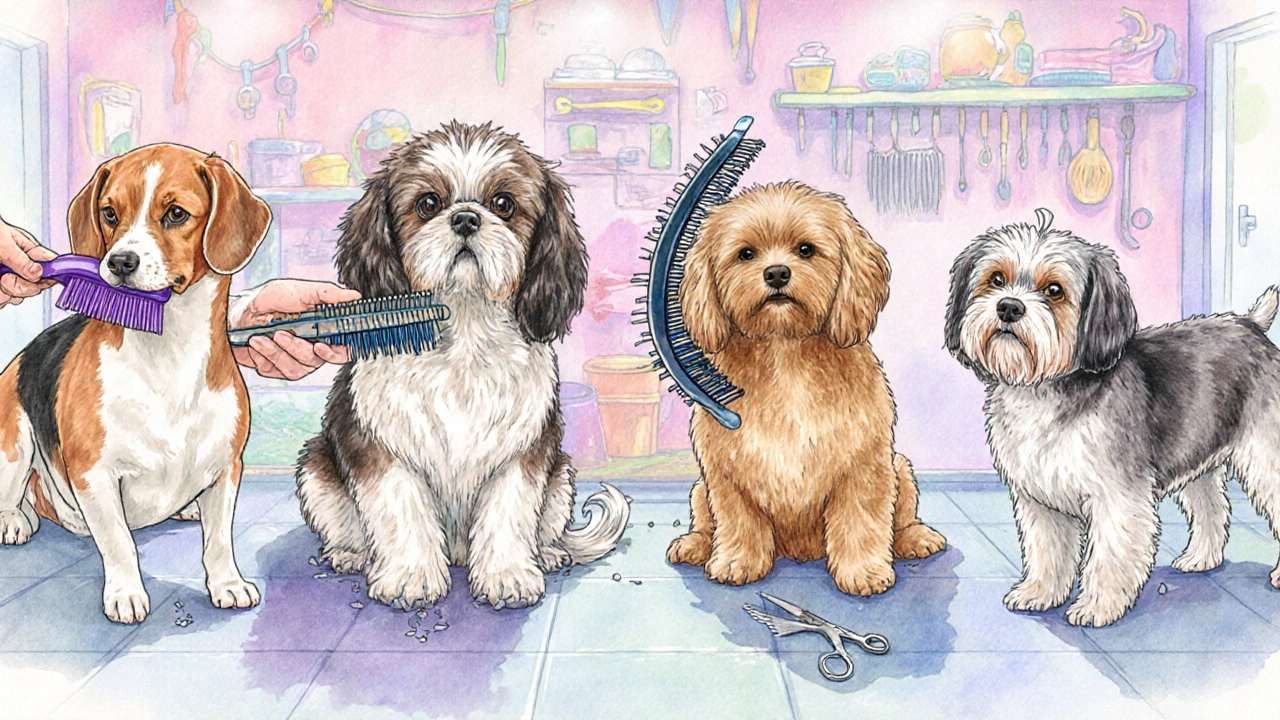
Tools of the trade
A well‑equipped grooming kit makes the routine smoother. Common grooming tools instruments designed to maintain a dog’s coat, skin, and nails include:
- Slicker brush - ideal for removing loose hair and small mats.
- Undercoat rake - essential for double‑coated breeds during shedding season.
- Shaving blade - a quick tool for short‑haired dogs to loosen surface hair.
- Nail clippers or grinder - keep paws comfortable; avoid cutting the quick.
- Gentle dog shampoo - formulated for canine skin pH, use sparingly.
How to know if it’s time for a grooming session
Even if your calendar says “groom in six weeks,” your dog may give you clues that the appointment is overdue. Look for:
- Visible mats or tangles that pull on the skin.
- Excessive shedding that blankets furniture.
- Odor coming from the coat or ears.
- Red, irritated skin or hot spots.
- Overgrown nails that click on hard floors.
When any of these appear, schedule a session sooner rather than later.
DIY grooming vs professional groomer
Many owners handle the basics at home, but there are scenarios where calling in a professional groomer a trained specialist who provides comprehensive grooming services pays off.
| Aspect | Do‑it‑yourself | Professional |
|---|---|---|
| Cost | Low (just tools) | Higher per session |
| Skill level | Basic brushing, nail trim | Advanced clipping, breed‑specific cuts |
| Time | Can fit into routine | Appointment needed |
| Safety | Risk of skin cuts if inexperienced | Trained to handle anxious dogs |
If your dog is anxious, has a complex cut (e.g., a poodle’s sculpted style), or you’re short on time, a professional visit is worth the extra expense.
Common grooming pitfalls and how to avoid them
Even seasoned owners slip up. Here are the top three mistakes and quick fixes.
- Over‑bathing. Too many baths strip natural oils, leading to dry, itchy skin. Stick to the schedule in the table, and use a dry‑shampoo spray between baths if needed.
- Skipping nail checks. Long nails can cause gait problems and even split. Keep a nail‑grinder handy for gradual trimming.
- Ignoring ear health. Moisture trapped in the ear canal breeds infection. After a bath, gently wipe the outer ear with a cotton ball; never insert anything deep.
Next steps for a smooth grooming routine
Take a quick inventory of your dog’s coat type, age, and activity level. Then match those factors to the table above and mark the next date on your calendar. If you’re unsure, start with a trial week of daily brushes for long‑haired dogs and watch the shedding drop. Adjust as you notice mats forming or nails getting too long.
Frequently Asked Questions
How often should I brush a short‑haired dog?
A short‑haired dog benefits from a quick brush 1‑2 times a week to remove loose hair and keep the coat glossy.
Do I need to bathe my dog every grooming session?
No. Bathing should be limited to once every 4‑6 weeks unless your dog gets especially dirty or has a skin condition that requires more frequent washing.
What’s the safest way to trim my dog’s nails?
Use a nail grinder on low speed and trim a little at a time, stopping before you see the quick (the pink area inside the nail). If you’re unsure, ask a vet or groomer for a quick demo.
Can I skip professional grooming for a poodle?
Poodles need regular clipping to keep their coat manageable. If you’re comfortable with scissors and follow a step‑by‑step guide, you can do it yourself, but many owners prefer a groomer for the precise shaping.
How do I know if my dog’s coat is too matted?
If pulling the hair feels like it’s tugging at the skin or you see clumps that won’t come apart with a brush, the coat is matted and needs a thorough detangling session, preferably with a detangling spray and a wide‑tooth comb.


